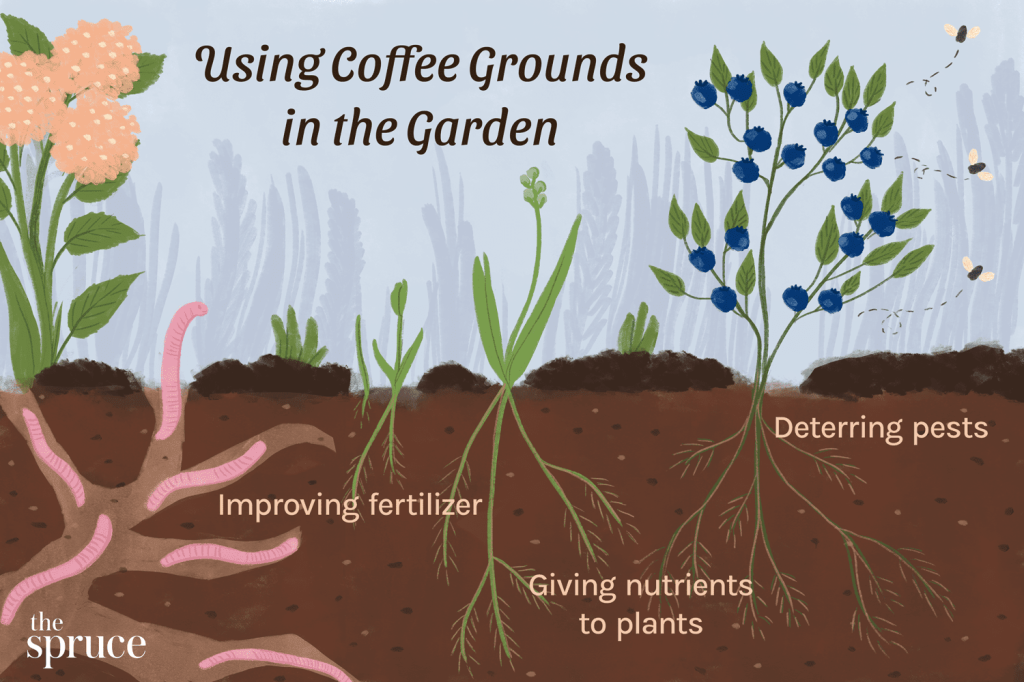Do Green Beans Love Coffee Grounds? Unlock The Secret To Optimal Growth!
Do Green Beans Like Coffee Grounds?
Introduction
Hello Coffee Enthusiast,
2 Picture Gallery: Do Green Beans Love Coffee Grounds? Unlock The Secret To Optimal Growth!
Welcome to our informative article on whether green beans like coffee grounds. As a coffee lover, you may have wondered about the benefits and drawbacks of using coffee grounds in your gardening practices. In this article, we will explore the relationship between green beans and coffee grounds, and provide you with valuable insights on this topic. So, let’s dive in and discover if coffee grounds are a suitable addition to your green bean planting routine.
What are Green Beans?

Image Source: helenacoffee.vn
🌱 Green beans, also known as snap beans or string beans, are the unripe fruit of various cultivars of the common bean. These beans are typically harvested and consumed when they are still young and tender, before the seeds inside have fully developed. Green beans are renowned for their crisp texture and fresh flavor, making them a popular choice for both cooking and gardening enthusiasts.
Who Can Benefit from Using Coffee Grounds?
🌿 Gardening enthusiasts and coffee lovers alike can benefit from the use of coffee grounds in their green bean plants. Coffee grounds are a rich source of nutrients such as nitrogen, phosphorus, and potassium, making them an excellent organic fertilizer for many plants, including green beans. Additionally, coffee grounds can help improve soil structure, retain moisture, and attract beneficial earthworms and microorganisms, promoting overall plant health.
When Should You Use Coffee Grounds for Green Beans?

Image Source: thespruce.com
⏰ The ideal time to use coffee grounds for green beans is during the planting process. Incorporating coffee grounds into the soil before planting your green bean seeds can provide them with a nutrient-rich environment to thrive in. Additionally, you can continue to apply coffee grounds as a top dressing or mulch throughout the growing season to provide a steady supply of nutrients to your green bean plants.
Where Can You Get Coffee Grounds for Your Green Beans?
🏪 Coffee grounds can be easily obtained from local cafes, coffee shops, or your own kitchen. Many cafes and coffee shops are happy to give away their used coffee grounds for free, as they are often considered waste. Alternatively, you can save the coffee grounds from your daily brewing routine and utilize them in your green bean gardening endeavors. The availability of coffee grounds for your green beans is abundant and convenient.
Why Do Green Beans Like Coffee Grounds?
🌱 Green beans like coffee grounds for several reasons:
1. Nutrient-rich soil: Coffee grounds provide essential nutrients like nitrogen, phosphorus, and potassium, which are crucial for the growth and development of green bean plants.
2. Improved soil structure: The organic matter in coffee grounds helps improve soil structure, allowing for better water drainage and root development.
3. Moisture retention: Coffee grounds can help retain moisture in the soil, reducing the frequency of watering and preventing drought stress in green bean plants.
4. Beneficial microorganisms: Coffee grounds attract earthworms and beneficial microorganisms, which contribute to the overall health and fertility of the soil.
5. Natural pest deterrent: Some gardeners believe that coffee grounds act as a natural deterrent for pests, such as slugs and snails, helping to protect green bean plants from potential damage.
How to Use Coffee Grounds for Green Beans?
🌿 Here are some steps to effectively use coffee grounds for your green beans:
1. Collect coffee grounds: Gather coffee grounds from local cafes, coffee shops, or save them from your daily brewing routine.
2. Incorporate into the soil: Mix the coffee grounds into the soil before planting your green bean seeds, ensuring an even distribution.
3. Apply as mulch: As your green beans grow, apply coffee grounds as a top dressing or mulch around the base of the plants, avoiding direct contact with the stems.
4. Monitor soil moisture: Check the moisture levels in the soil regularly and adjust watering accordingly, as coffee grounds can retain moisture.
5. Observe plant health: Monitor the overall health and growth of your green bean plants, making note of any positive or negative effects from the use of coffee grounds.
Advantages and Disadvantages of Using Coffee Grounds for Green Beans
Advantages:
1. Natural and organic: Coffee grounds are a natural and organic fertilizer option for green beans, minimizing the use of chemical-based products.
2. Nutrient-rich: Coffee grounds provide essential nutrients to promote healthy growth and high yields in green bean plants.
3. Soil improvement: The incorporation of coffee grounds can enhance soil structure, drainage, and fertility.
4. Sustainable recycling: Utilizing coffee grounds helps reduce waste and promotes sustainability in gardening practices.
5. Cost-effective: Coffee grounds are often available for free, making them an affordable option for green bean enthusiasts.
Disadvantages:
1. Acidity concerns: Excessive use of coffee grounds can raise soil acidity levels, which may negatively affect certain plants, including green beans.
2. Calcium depletion: Coffee grounds can deplete calcium levels in the soil over time, potentially leading to nutrient imbalances in plants.
3. Potential for mold growth: If coffee grounds are piled too thickly around green bean plants, they may create a damp environment that promotes mold growth.
4. Pest attraction: While coffee grounds can deter some pests, they may attract others, such as fruit flies or certain types of ants.
5. Caffeine sensitivity: Green beans grown in soil enriched with coffee grounds may have higher caffeine content, which could be problematic for individuals with caffeine sensitivity.
Frequently Asked Questions about Green Beans and Coffee Grounds
1. Can I use coffee grounds for other plants besides green beans?
Yes, coffee grounds can be beneficial for various plants, such as tomatoes, roses, and blueberries. However, it’s essential to consider the specific needs and preferences of each plant.
2. How often should I apply coffee grounds to my green bean plants?
It’s recommended to apply coffee grounds as a top dressing or mulch every few weeks throughout the growing season, ensuring not to exceed the recommended amount for your plants.
3. Can I use coffee grounds from flavored or decaffeinated coffee?
Yes, flavored or decaffeinated coffee grounds can be used for green beans and other plants. The flavorings or the absence of caffeine typically do not affect their suitability as a fertilizer.
4. Are there any alternatives to using coffee grounds for green beans?
Yes, alternatives to coffee grounds include other organic fertilizers, such as compost, well-rotted manure, or specific vegetable-based fertilizers. Experimenting with different options can help you find what works best for your green bean plants.
5. Can I use coffee grounds for potted green bean plants?
Yes, coffee grounds can be used in potted green bean plants. Ensure proper drainage and monitor soil moisture to prevent waterlogging.
Conclusion
In conclusion, coffee grounds can be a beneficial addition to your green bean gardening routine. They provide essential nutrients, improve soil structure, retain moisture, and attract beneficial microorganisms. However, it’s important to be mindful of potential drawbacks, such as acidity concerns and pest attraction. By using coffee grounds properly and in moderation, you can enhance the growth and productivity of your green bean plants. So go ahead, give it a try, and enjoy the bountiful harvest of your green beans!
Final Remarks
Disclaimer:
The information provided in this article is for educational purposes only and should not be considered as professional gardening advice. It’s always recommended to consult with experts or conduct further research before implementing any new gardening practices. The author and publisher disclaim any liability for any loss or damage caused directly or indirectly by the information provided in this article.
This post topic: Green Coffee



